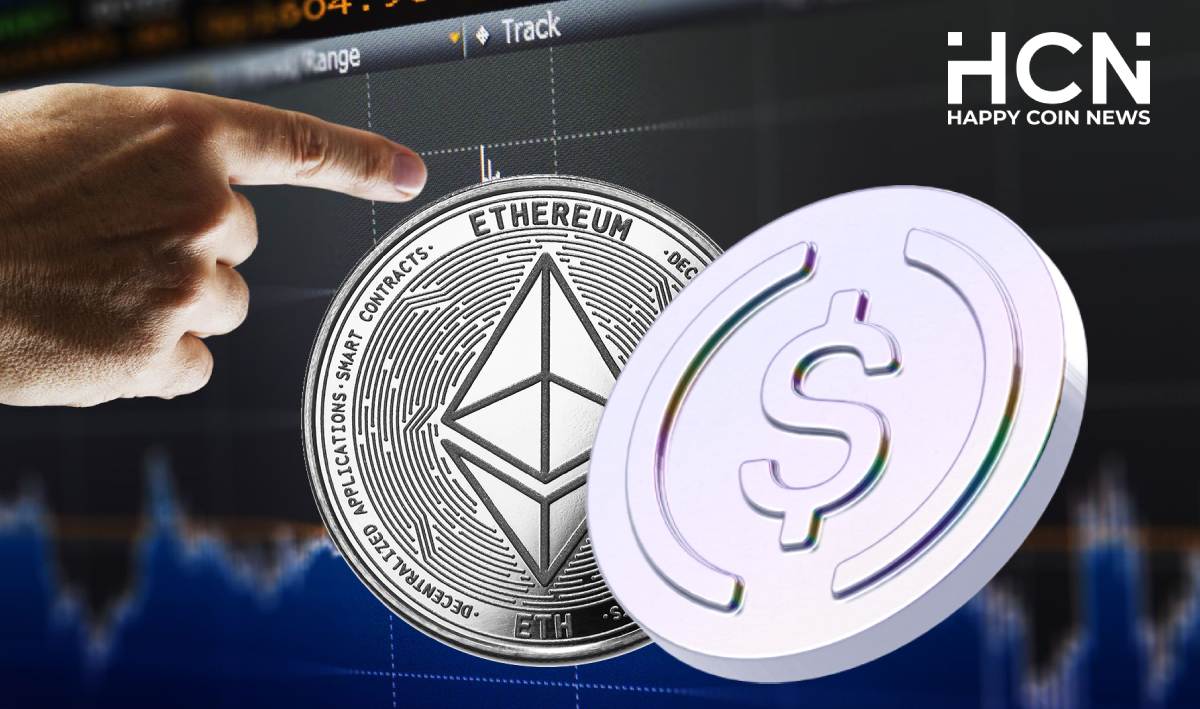Swapping USDC to ETH: A Detailed Exploration
In the ever-evolving landscape of digital currencies, trading between various assets has become a common practice for beginners and seasoned investors. One trade involves swapping USDC (USD Coin) for ETH (Ethereum). This article will dwell on this specific conversion’s how, why, and what.
Introduction to USDC and ETHUSDC (USD Coin)
USDC is a type of stablecoin pegged to the US Dollar. Every USDC in circulation has an equivalent of $1 in a reserved bank account, which helps maintain its stable value. It’s a Trusted medium for traders and investors who want to avoid the volatility associated with other cryptocurrencies.
ETH (Ethereum)
Ethereum is the second-largest cryptocurrency by market capitalization, only next to Bitcoin. Unlike USDC, ETH is volatile, with its price determined by market forces. Ethereum is not just a currency but a platform that enables the creation of decentralized applications (dApps) and smart contracts.
Why Swap USDC for ETH?
There are numerous reasons why an individual or an institution might want to swap USDC to ETH:
- Speculation: Traders may believe that ETH’s pETH will rise in the short or long term, making it an attractive investment.
- DApps and Smart Contracts: Some may need ETH to interact with EthereuEthereum’sor to execute smart contracts.
- Diversification: As part of a broader investment strategy, diversifying one’s portfolio by holding a mix of stablecoins and volatile assets can be wise.
- Gateway to Other Cryptocurrencies: ETH can often be a stepping stone to investing in other altcoins that aren’t purchasable with USDC or fiat currency.
- How to Swap USDC for ETH?
a. Centralized Exchanges (CEX)
Centralized exchanges, like Coinbase, Binance, or Kraken, are platforms where users can trade cryptocurrencies. Here’s Here’s-by-step guide:
- Register: Sign up for an account on a reputable exchange.
- Deposit USDC: Transfer USDC from your wallet to the exchange wallet.
- Place an Order: Navigate to the USDC/ETH trading pair and place a buy order.
- Withdraw: Once the trade is complete, you can withdraw ETH to your wallet.
Pros: User-friendly, high liquidity, fast transactions. Cons: Central point of failure, fees associated with trading.
b. Decentralized Exchanges (DEX)
Decentralized exchanges, such as Uniswap or Sushiswap, allow for peer-to-peer trading without intermediaries.
- Connect a Wallet: Use a web3 wallet like MetaMask to connect to the DEX.
- Choose the Swap: Select USDC as the input and ETH as the output.
- Confirm the Swap: Review the details, including fees, and confirm the transaction.
- Completion: Once approved, ETH will be added to your connected wallet.
Pros: No need for account creation, enhanced privacy. Cons: Less intuitive for beginners, potentially higher gas fees.
Factors to Consider When Swapping
- Fees: Be aware of the associated costs, whether it’s fees on centralized exchanges or gas fees on DEXs.
- Slippage: On DEXs, the difference between the expected price and the price a trade executes is called slippage. Set a slippage tolerance to avoid unfavorable rates.
- Liquidity: Ensure there’s liquidity for the trading pair to avoid significant price impacts.
- Security: Always prioritize safety. Use hardware wallets, enable 2FA, and never share your private keys.
Conclusion
Swapping USDC for ETH is a straightforward process once you understand the basics. Whether you’re ‘retreating on ETH’s pETH or diving deeper into the Ethereum ecosystem, the trade can be executed efficiently on centralized and decentralized platforms. Always prioritize safety, know the associated fees, and ensure you’re at the best rate for your swap.
